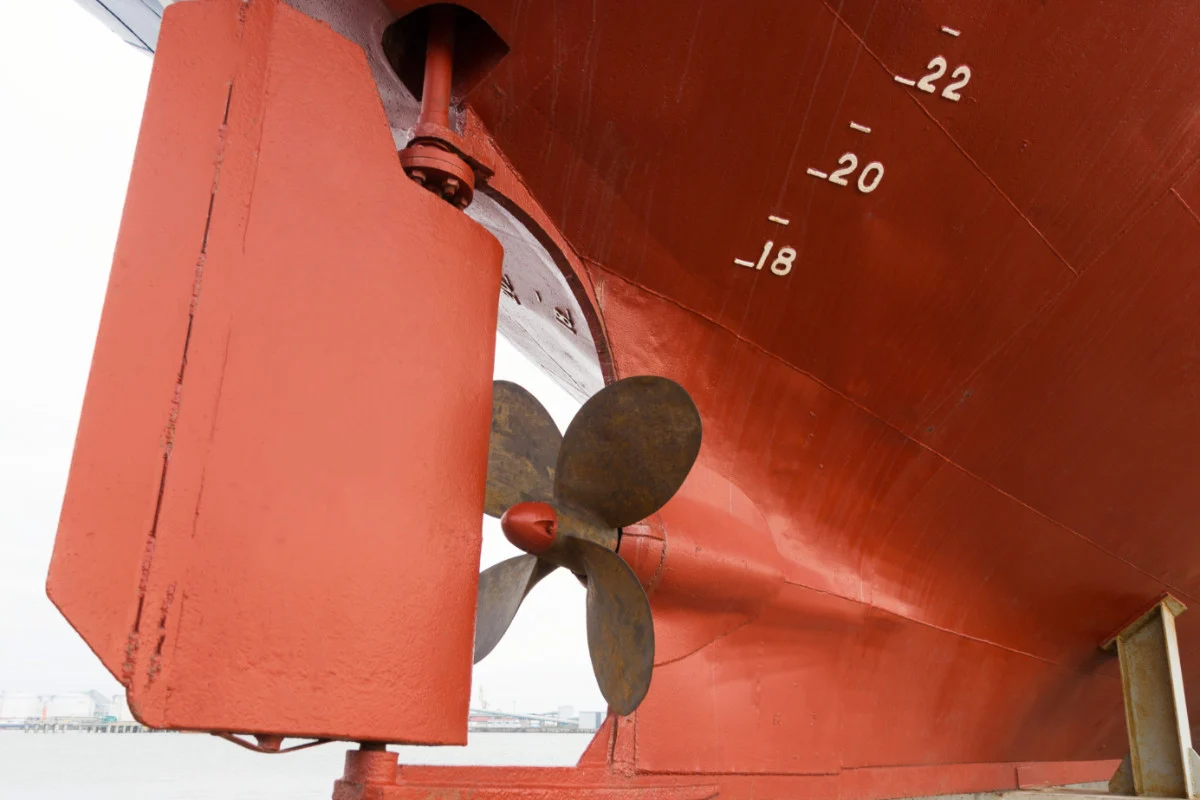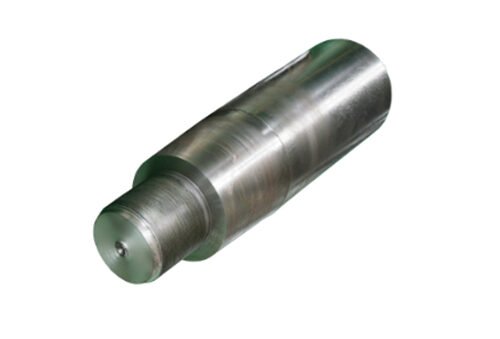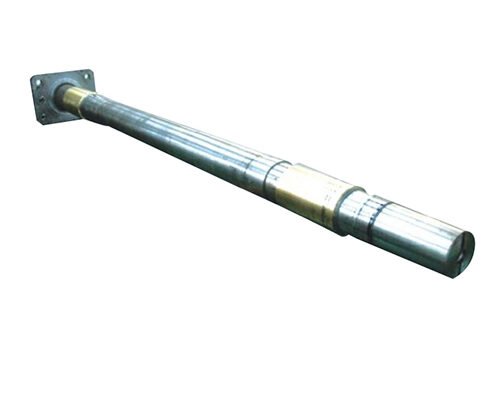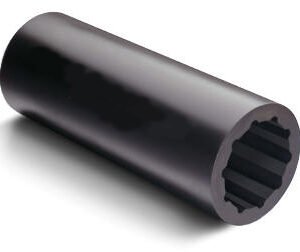A ship’s rudder is a vital control surface used to steer a vessel and is a core component of its propulsion system. Located at the stern, usually behind the propeller, its primary function is to change the ship’s direction by deflecting the flow of water past the hull.
How a Rudder Works
The rudder operates on the principles of hydrodynamics. When the rudder is turned to a specific angle, it creates an area of high pressure on the face of the blade and an area of low pressure on the opposite side. This pressure difference generates a lateral force that pushes the stern of the ship sideways. Because the bow of the ship has less resistance to sideways movement, the vessel turns in the direction of the low-pressure side. The propeller’s wash greatly enhances the rudder’s effectiveness, especially at low speeds, by increasing the water flow over its surface.
Main Components of a Rudder Assembly
A rudder is not a single part but a system of interconnected components that facilitate steering and support the structure.
- Rudder Blade: The main hydrofoil-shaped plate that deflects the water flow. It is typically a streamlined, hollow steel structure.
- Rudder Stock: A vertical forged steel shaft that runs from the rudder blade up through the hull to the steering gear. It is the pivot point of the rudder.
- Pintle and Gudgeon: The pintle is a pin on the lower part of the rudder blade that fits into a bearing, or gudgeon, on the vessel’s stern frame. This provides a lower support point for the rudder and absorbs lateral forces.
- Bearings: Rudder bearings support the weight of the rudder and the forces acting upon it. The main bearings are the rudder stock bearings (or rudder carrier bearing) and the pintle bearings. These are often made of a composite material, bronze, or white metal.
- Steering Gear: The machinery (typically hydraulic) located in the steering gear room that applies torque to the rudder stock to turn the rudder.
Types of Rudders
Rudders are categorized based on their design and how the blade is supported.
- Unbalanced Rudder: The entire blade surface is located aft of the rudder stock. These are less common on modern vessels due to the high torque required to turn them.
- Balanced Rudder: A portion of the rudder blade (typically around 25%) is positioned forward of the rudder stock. The water pressure on this forward section helps to “balance” the force on the aft section, reducing the torque required from the steering gear.
- Semi-Balanced Rudder: The most common type on modern ships. A small portion of the rudder blade is balanced, while the upper portion is unbalanced. This design combines the lower torque of a balanced rudder with the structural stability of an unbalanced one.
- Flap Rudders: These are high-lift rudders that have a small flap on the trailing edge. When the main rudder turns, the flap also moves, increasing the effective angle of the rudder and providing much greater lift and maneuverability, especially at low speeds.
Maintenance and Common Spares
Maintaining the rudder system is crucial for a vessel’s safety and steering responsiveness.
- Bearing Wear: Wear in the rudder stock and pintle bearings is a common issue. Excessive wear can lead to rudder “slap” and vibrations.
- Corrosion and Damage: The rudder blade and stock are subject to corrosion and damage from floating objects. Regular inspection during dry-docking is essential.
- Steering Gear: The hydraulic system of the steering gear must be routinely checked for leaks, correct oil levels, and proper function.
Common Spares include:
- Pintle Bearings: Spares for the lower support bearings are essential, as they are subject to heavy wear.
- Rudder Stock Bearings: Spares for the upper support bearings.
- Rudder Stock Seals: Seals around the rudder stock that prevent water ingress into the steering gear room.
- Anodes: Sacrificial zinc or aluminum anodes attached to the rudder blade to prevent galvanic corrosion. These must be replaced periodically.
- Steering Gear Spares: Spares for the steering gear’s hydraulic system, such as seals, O-rings, and hydraulic fluid.
A well-maintained rudder is a cornerstone of a vessel’s safety and operational efficiency, allowing for precise control and maneuvering in all conditions.
We offer an extensive range of marine engine brands and their associated spare parts, providing comprehensive solutions for both main propulsion and auxiliary power needs across diverse vessel types. Our supply capability covers various generations and models, ensuring support for a wide array of marine applications.
Featured Brands and Engine Series/Models:
SULZER:
- Two-Stroke Engines:
- RD/RND Series: RD68, RND76, RND76M, RND90, RND90M (Classic large-bore, low-speed engines, still in operation).
- RLA/RLB Series: RLA(B)56, RLA(B)66, RLA(B)76, RLB90 (Developed two-stroke designs).
- RTA/RT-Flex Series: RTA38, RTA48(T), RTA52, RTA58, RTA62, RTA72, RTA76, RTA84, RTA84M, RTA84C, RTA96 (Modern, fuel-efficient, electronically controlled two-stroke engines).
- Four-Stroke Engines:
- Z Series: ZL40/48, 16ZAV40S (Medium-speed engines).
- RF Series: RF44, RF56 (Often used for auxiliary power or generator sets).
- TAD Series: TAD36, TAD48 (For specific applications).
MAN (including pre and post-MAN B&W models):
- Two-Stroke Engines (KZ, KSZ, K, L, S, MC/MC-C, ME/ME-C): 40/54A, 52/90N, 57/80C, KZ57/80F, KSZ70/125, KSZ78/155, 90/160A, 52/55L, 58/64, 90/190C, L60/105E, 70/120E, 70/125C, L, KSZ78/155A, KSZ70/125B, L52/55A, 40/45 (A broad spectrum covering main propulsion and auxiliary engines).
B&W (Burmeister & Wain – prior to MAN B&W merger):
- MC/MCE Series: L35MC, L60MC, L80MC, L55GFCA, L80GFCA, L80GB, 74VT2BF, K62EF, K74EF, K84EF, K45GFC, K67GFK, K80GFK, K90GFS, 45HU, L70MC (Various generations of two-stroke diesel engines).
- MC-C/ME-C Series: L50MC, S60MC, S70MC, K80MC, S80MC, K90MC-C, L67GFCA, L90GB (Electronically controlled and conventional two-stroke engines).
- VT2BF/EF Series: 50VT2BF, 62VT2BF, K84EF (Older models still in service).
MITSUBISHI:
- UEC/UET Series: UEC37L/LA/LS, UEC45HA, UEC60L/LA/LS, UEC45L/LA/LS, UET45/75C, UEC52/125H, UEC52L/LA/LS, UET45/80D, UEC52/90D, UEC(T)52/105D, UEC45/115H, UEC37/88H, UEC37H (Mitsubishi’s proprietary two-stroke and some four-stroke engine series).
PIELSTICK:
- PA Series: PA6, PC3, PC2-2, IHI PC2-5, PC4, PC2-6, PC4-2L, PC4-570, PA5 (High-speed, compact four-stroke engines, commonly used for generator sets or auxiliary propulsion).
AKASAKA:
- UET/UEC/DM/AH Series: UET45/80D, UEC52/105D, DM51SS, UEC 60/150H, UEC 60H, A31, A34, A37, A41, AH27, AH28, AH30, AH36, AH38, AH40, DM30, DM36, DM38, DM46, DM47 (A prevalent engine brand, particularly in Japanese-built vessels).
DEUTZ:
- RBV/TBD/BVM Series: RBV8M358, RBV8M540, RBV16M640, TBD620L6, BVM350, BVM540, BF6M716 (Various four-stroke medium- and high-speed diesel engines for auxiliary and smaller main propulsion applications).
HANSHIN:
- EL/LH/LU/LUN/LUD/LUS Series: EL30, EL32, EL35, EL40, EL44, LH28RG, LH31G, LU28(A,R,G), LU32, LU35, LU38, LU46(A), LU50, LU54, LUN28, LUN30, LUD32, LUD35, LUS38 (Another significant engine brand commonly found in Japanese vessels).
NIIGATA:
- MG/M Series: MG40X(EX), M34X, 6M28BF, TM31X (Medium-speed diesel engines, typically used in small and medium-sized vessels).
MAK:
- M/MU/AK/AKM Series: M332, M453AK, MU551AK, MU552AK, M601, MU452AK, 451AK, 6M453AK, 9M453C, 6M601C, 8M601 (Medium-speed four-stroke engines, widely used in various marine applications).
WARTSILA:
- 20/22/26/32/38/46/GD/TKR Series: 22, 32, 31, 26, 20S, 28, 38, 46, 32GD, 46GD, 14, TKR22, HFR-V32, NOHAB (Wärtsilä’s broad portfolio of medium- and high-speed diesel engines for main propulsion, auxiliary, and generator sets).
DAIHATSU:
- PS/PKT/DS/DL/DK/PL Series: PS-18, PS-22, PS-20, PS-26, PS-30, PKT-14, PKT-16, PKTD-16, DS-18, DS-22, DS-26, DS-28, DS-32, DL-14, DL-16, DL-19, DL-20, DL-22, DL-24, DL-26, DK-20, PL-24 (Compact and reliable engines primarily used for auxiliary power and generator sets).
CUMMINS:
- BT/CT/NT/KTA/QSK/QSM Series: 4BT3.9, 6BT(A)5.9, 6CT8.3, NT(A)855, N14, KTA19, KTA38, KTA50, QSK19, QSM11 (Robust and durable engines for marine auxiliary power, generator sets, and some smaller main propulsion applications).
CATERPILLAR:
- 3000/3100/3300/3400/3500/3600 Series & C Series: 3054, 3056, 3066, 3106, 3126, 3306, 3406, 3408, 3412, 3508, 3512, 3516, 3606, 3608, 3612, 3616, 3618, C1.5, C2.2, C7, C9, C10, C12, C15, C16, C18, C30, C32 (Reliable and widely used engines across a vast range of main propulsion, auxiliary, and generator set applications).
SCANIA:
- DI Series: DI 09, DI 13, DI 16 (High-performance diesel engines designed for marine applications, typically used as auxiliary and smaller main propulsion engines).




